Rick Bevan spends an afternoon with Nicolas Colsaerts and his family at their home in Abu Dhabi, where the much-loved Belgian reflects on a glittering 25-year career as he calls time on Tour life after 501 DP World Tour appearances.
It was an idea that had been germinating in Nicolas Colsaerts’ mind since he was blindsided in 2021, after being diagnosed with a rare, serious kidney disease called primary membranous nephropathy.
Was the juice worth the squeeze anymore?
“Just after I got sick, I was like, do I really want to do those 25–30 weeks a year where I’m away, where I’m struggling with many different things,” he says. “Not just necessarily golf-related. You start to look at things differently – I haven’t really had the fire to go practise as much.
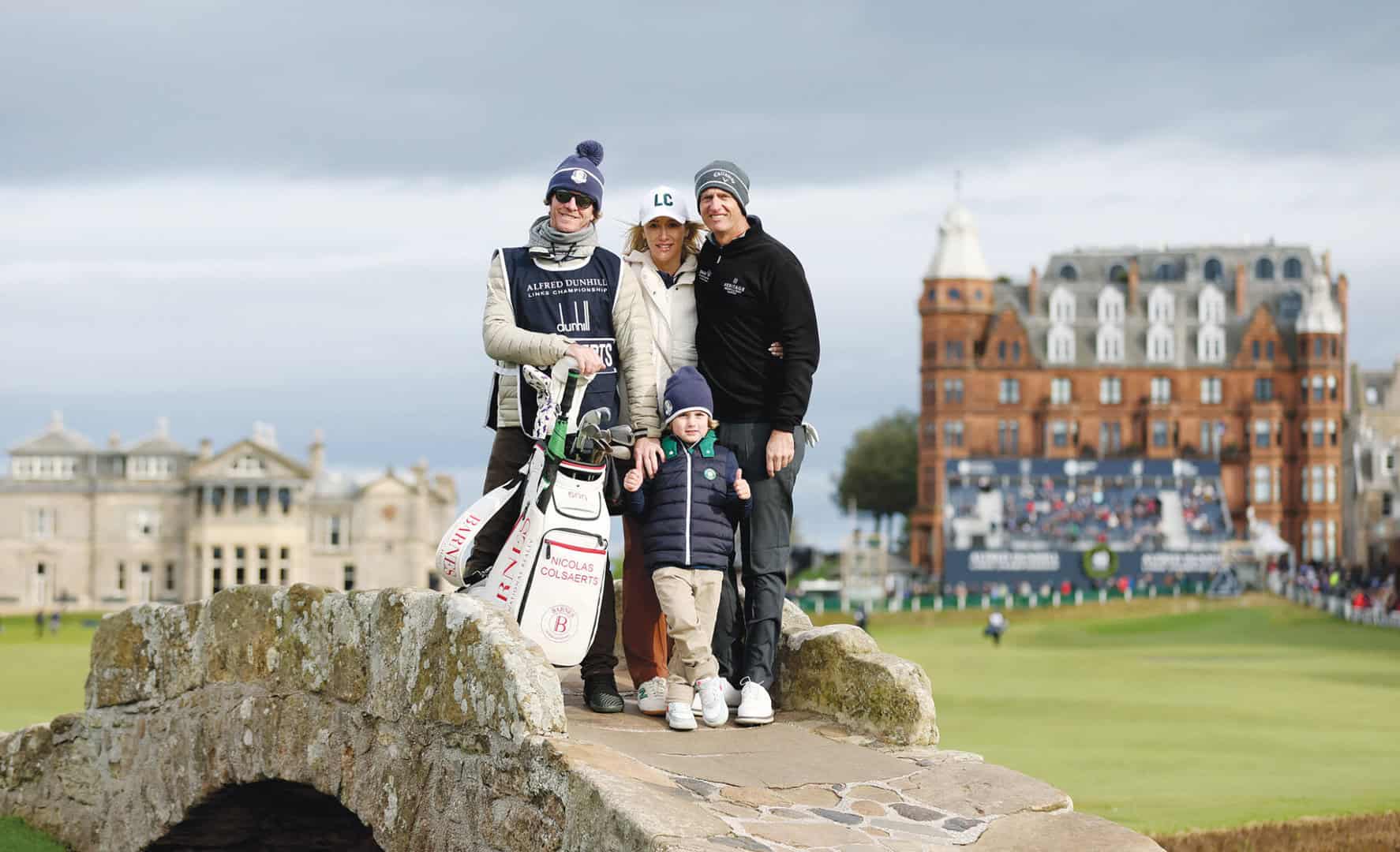
“I just don’t want to live that life anymore. I’ve done it for 25 years with the ups and downs. It’s a vicious circle: I don’t play as good as I want, but I don’t really have the will to practise. Do I want to put myself through 30 weeks of that a year? I think the answer is no.”
I’m privileged to spend an afternoon with the man known on Tour as ‘The Dude’, and his family, at their new home in Abu Dhabi. From the outside, it would be easy to form the wrong picture of a successful Tour player’s household – entitled, spoilt, arrogant? Nothing could be further from the truth. The Colsaerts clan are as humble, easy-going and grounded as they come.
I’m greeted at the door by Rachel, who welcomes me in and immediately makes me a barista-level cup of coffee – much needed after the drive from Dubai. Their two boys, Jackson (7) and Ollie (4), come and say hello with admirable manners and confidence. And then there’s the fifth member of the family – Coco, the dog, padding about like she owns the place.
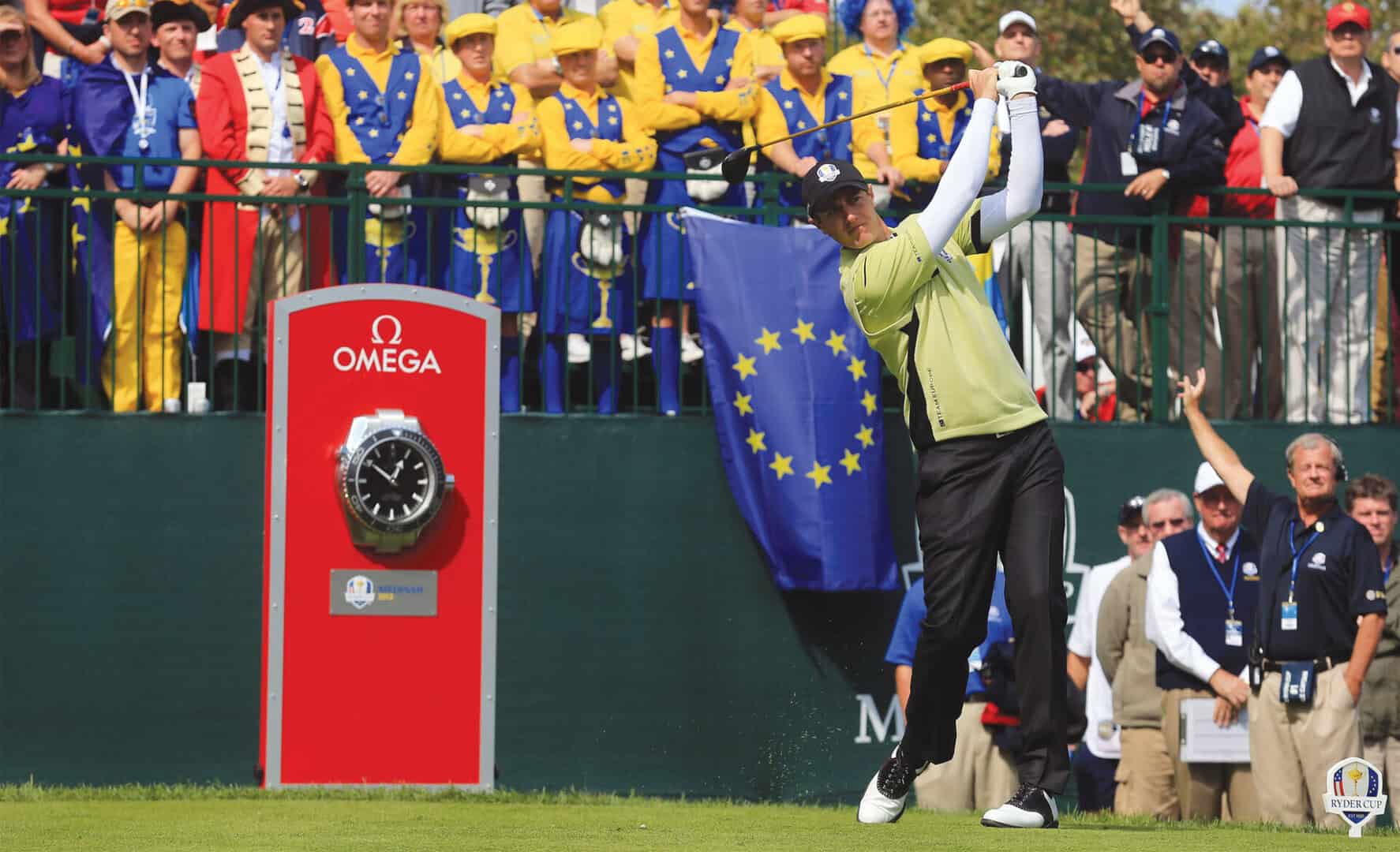
Back at the dining table, Nico and I continue our candid deep-dive into his facinating life and professional journey. His decision to call time on a career spanning three decades wasn’t a rash one. Dubai’s ground-breaking Brain and Performance Centre helped him regain his health and his confidence, “they’ve been absolutely incredible,” he says. But the calendar didn’t lie. Twenty-five years on the road. Two boys growing fast. An amazingly supportive wife who’d done the heavy lifting. Something had to give.
He originally planned to step away at the end of last season. But a purple patch at the Alfred Dunhill Links Championship, where he led at the halfway stage and came agonisingly close to a memorable victory – taking the runner-up spot, one behind Tyrrell Hatton – dragged him back in. Instead, a new plan was hatched: join the exclusive 500 Club and walk away with one final big career moment in the bag.
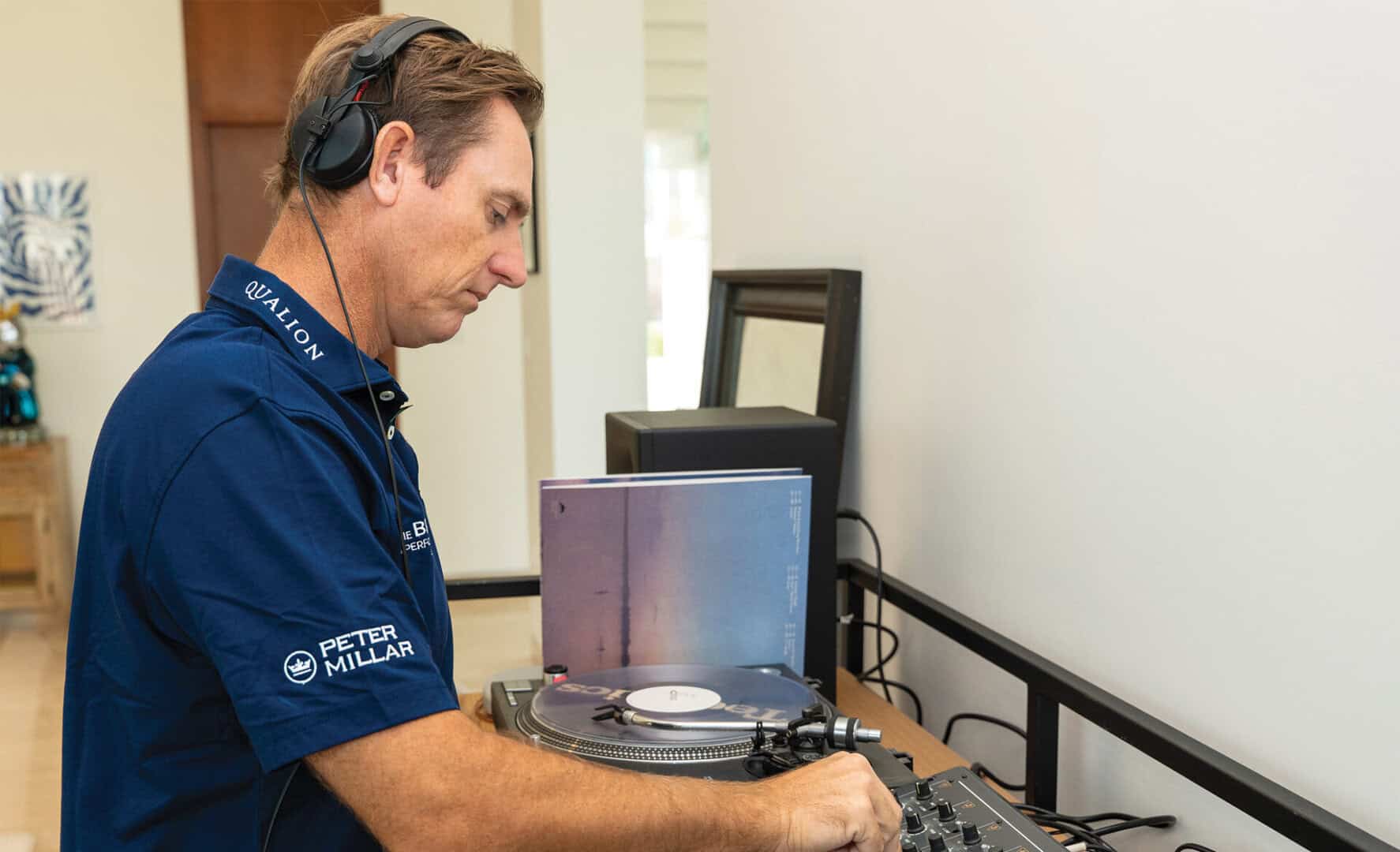
“There’s not 50 of us that have done it,” says the long-time UAE resident. “I think there’s going to be less and less people being able to get to 500 because of the physical demands of the game. It bothered me last year to realise that I was going to fall short of it.”
In a gift from the golfing gods, his 500th came back at the Alfred Dunhill Links – and when brutal weather chopped the event to three rounds, it meant his final loop of that milestone week fell at St Andrews, the Home of Golf. There was one last passport stamp in India – a final farewell at the DP World India Championship – and then that was that for Tour life.
“A couple of times on the Sunday, I realised that that’s actually the last time that I’m hitting this tee shot,” he says. “These pictures will stay with me forever. The thing that I’ll miss the most is probably playing some of the best courses in the world in the best conditions possible.”
What a ride it’s been, though. The product of a sporting family (his great-grandfather represented Belgium at basketball and water polo at the 1920 Olympic Games), Colsaerts became obsessed with golf at an early age.
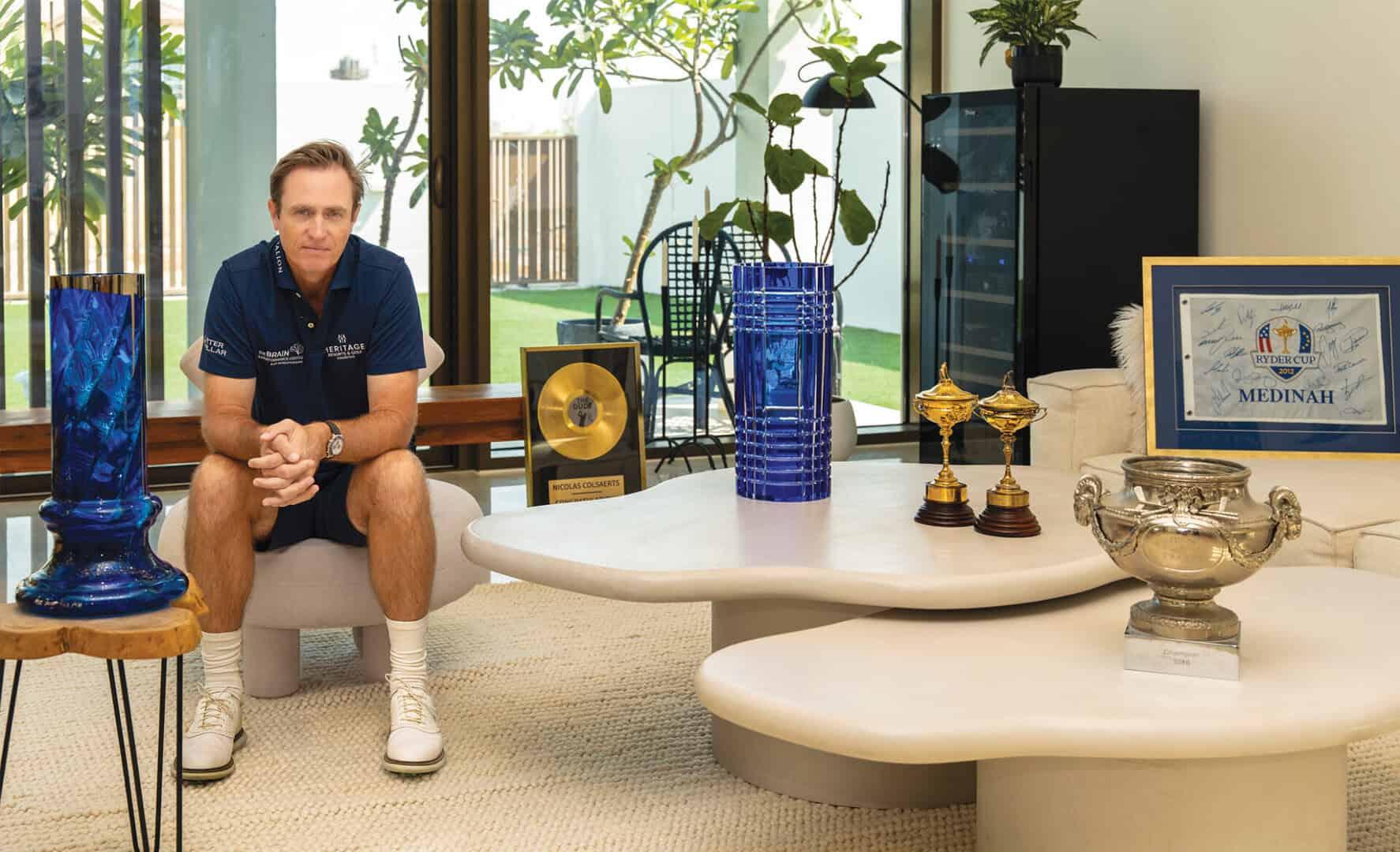
“Dad took me to a driving range, inside a horse track – beautiful driving range,” he says. “That’s where I hit my first golf balls. I realised by the time I was probably between 12 and 14: this is for me.
“I remember reading an article about Bernhard Langer that he dropped out of school at 14, and I told my parents I wanted to drop school. I couldn’t go to normal school anymore because of all the tournaments, so I went into some sort of lateral schooling. I was obsessed with every facet of the game.”
By the time he was 16, Colsaerts was winning a hatful of Belgian championships, playing in Junior Ryder Cups (1997 and 1998) and marking himself out as a star of the future.
He turned pro on his 18th birthday, went to Q-School and bagged a European Tour card. In the blink of an eye, he was lining up on the range alongside the very players he’d been following as a fan a matter of months earlier.
“The transition was way too abrupt and way too aggressive in my case,” he says. “I went and played Q-School at the end of 2000, not realising how much my life could change. Back then, 18 years old was extremely young. From one day to another, I ended up teeing at pro events with 30-and 35-year-olds, and my game was all over the place. I didn’t have the frame or the package that these kids have now. We were just freestyling. I got on Tour like an untreated diamond, and it took a little while to take the edges off.”
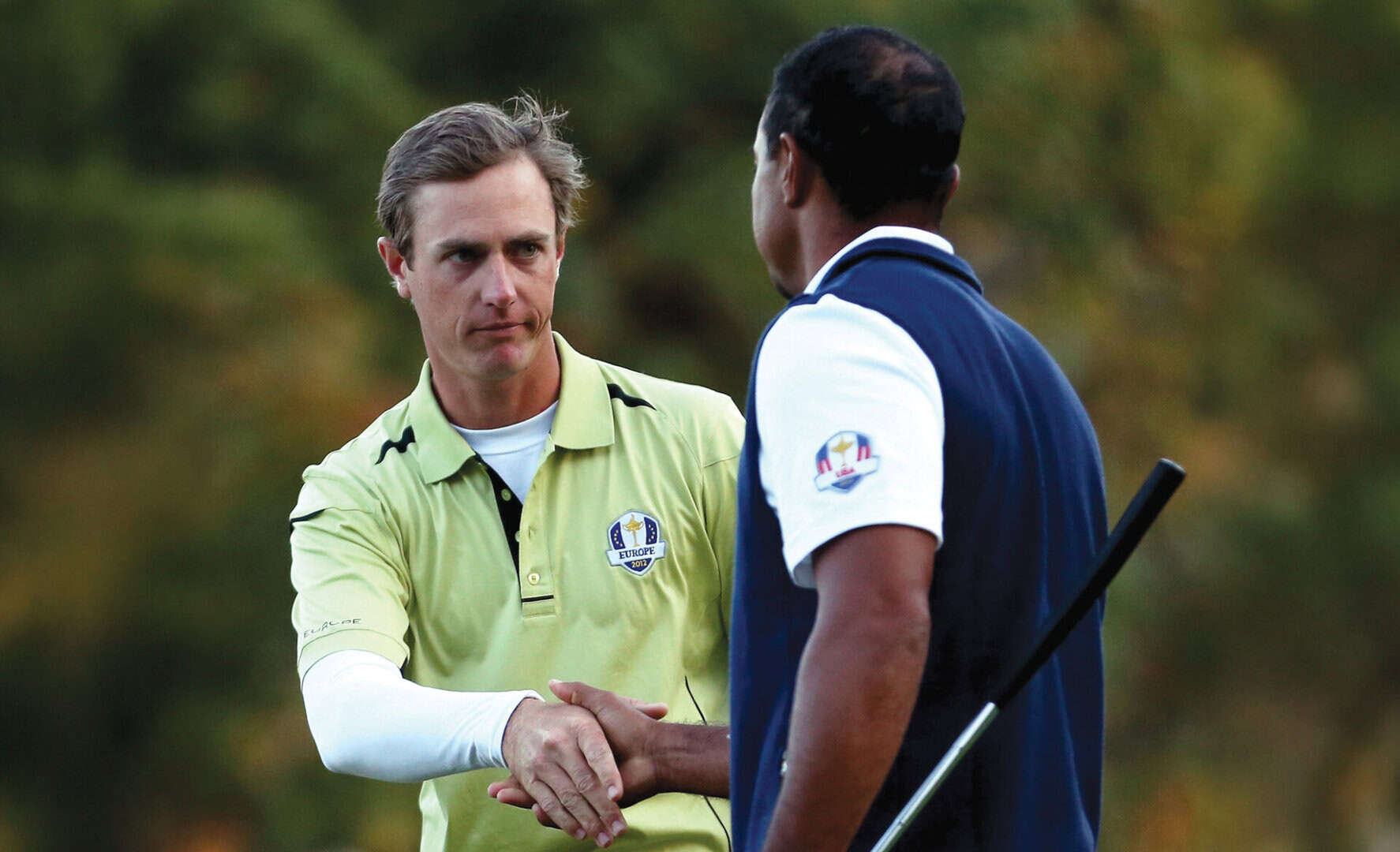
He lost his card and dropped down to the second-tier Challenge Tour – it would happen again in 2008–09 – an experience that showed him how extreme the step up from talented junior to Tour golfer really is.
“2001 is the one that scarred the most,” he says. “It was the realisation that being on Tour is a serious business and I was flat-out not ready. I didn’t have the maturity.”
But he didn’t lose his cool. His raw talent had emboldened him with an ingrained calm, self-confidence. This is The Dude, after all…
“I think I was so unconscious of the possibilities that were ahead of me that I basically just bore through them,” he says. “I never panicked. Not ever. I kind of always knew that I had this in me.
“It’s a risky game because, when you lose your card on Tour, you’re never sure to get it back. But I always had this good feeling in my gut that it was going to be all right.”
The breakthrough came during a barnstorming run through 2011–2012. A first European Tour title at the Volvo China Open was followed by the biggest victory of his career the next year at the Volvo World Match Play. For Colsaerts, it didn’t feel like a weight off his back – it was a natural progression on his path to the very top.
“It wasn’t relief – it was a first hurdle passed,” he says. “From winter ’09–’10 I took it to the level of seriousness it deserves.”
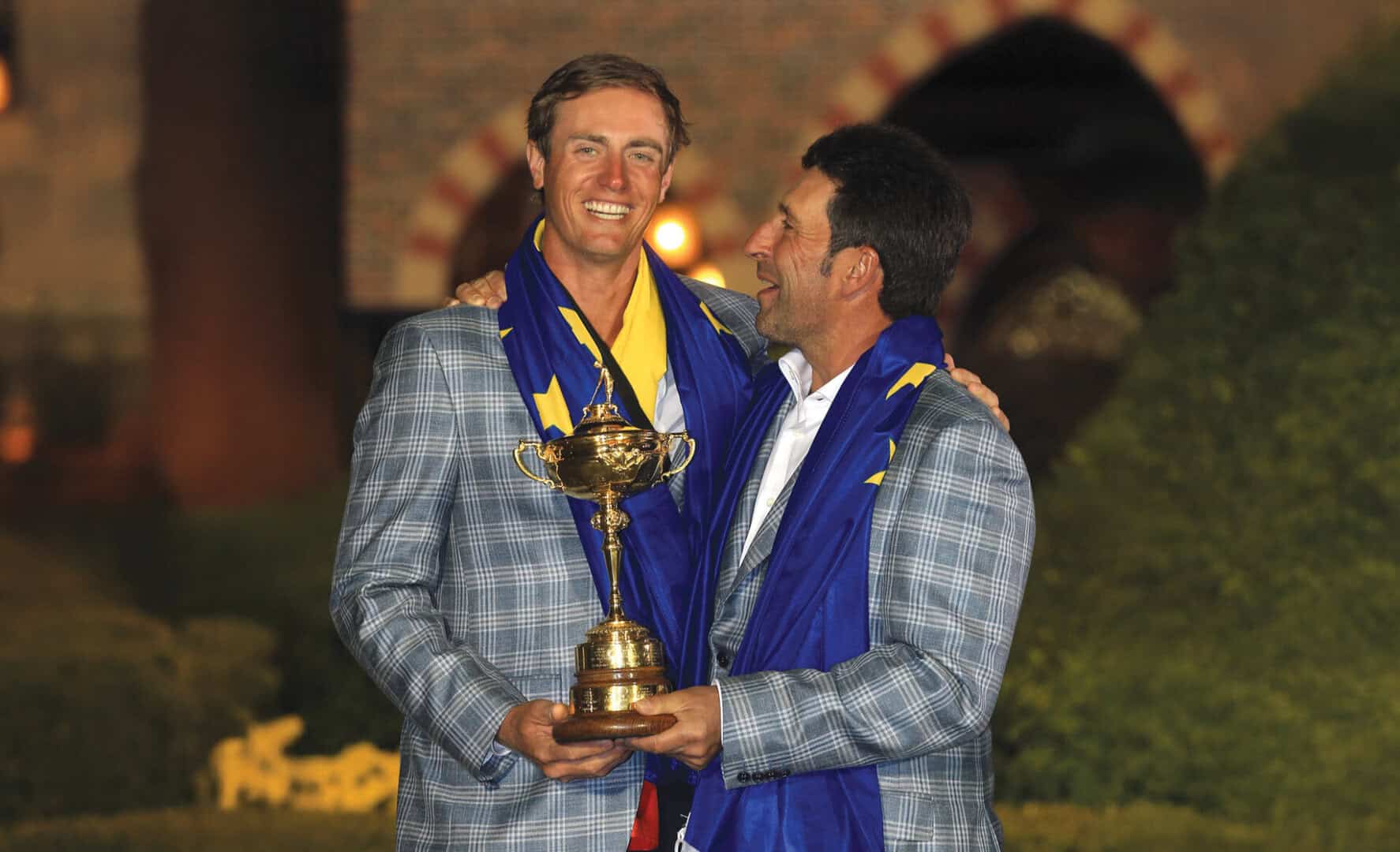
Then came the Miracle of Medinah. It’s a well-told story – deservedly so – but one that bears repeating. Alongside Lee Westwood in the Friday fourballs, set to the raucous soundtrack provided by the US fans, his first taste of Ryder Cup action was against perhaps the greatest player ever – Tiger Woods – and Steve Stricker. Colsaerts announced his arrival on golf’s biggest stage with rock-star aplomb. With eight birdies and an eagle on his card, he almost single-handedly secured Europe’s only point of the session.
“I never felt frightened that week,” he says. “If Woods holes from 15 or 18 feet on the last, it’s a half – and I’m remembered differently. That’s how tight the Ryder Cup is.”
Twelve years later he’d feel the enormity of the Matches from a different vantage point as vice-captain to Luke Donald in Rome, a role he says rejuvenated him during a difficult year following his illness.
“I really enjoyed being part of that week a lot more than when you’re playing. I was still going through depression at that stage. It kind of healed me to go to this Ryder Cup and still take the role with extreme seriousness and a sense of responsibility again, feel the vibrations from the crowd. It really healed me. I could breathe normally again when Rome was over.”
There were near-misses and what-ifs, as there are in any long career. A fleeting PGA Tour stint, top-10s in Majors that might have swelled into something bigger with a kinder bounce – Merion’s closing hole still lives rent-free in his memory. But there were also the days when the mercury hit red: the course record at Fancourt, a 60 at Vilamoura that lipped out for 59, and an emotionally charged victory at the 2019 Open de France, which was to be his last on the DP World Tour.
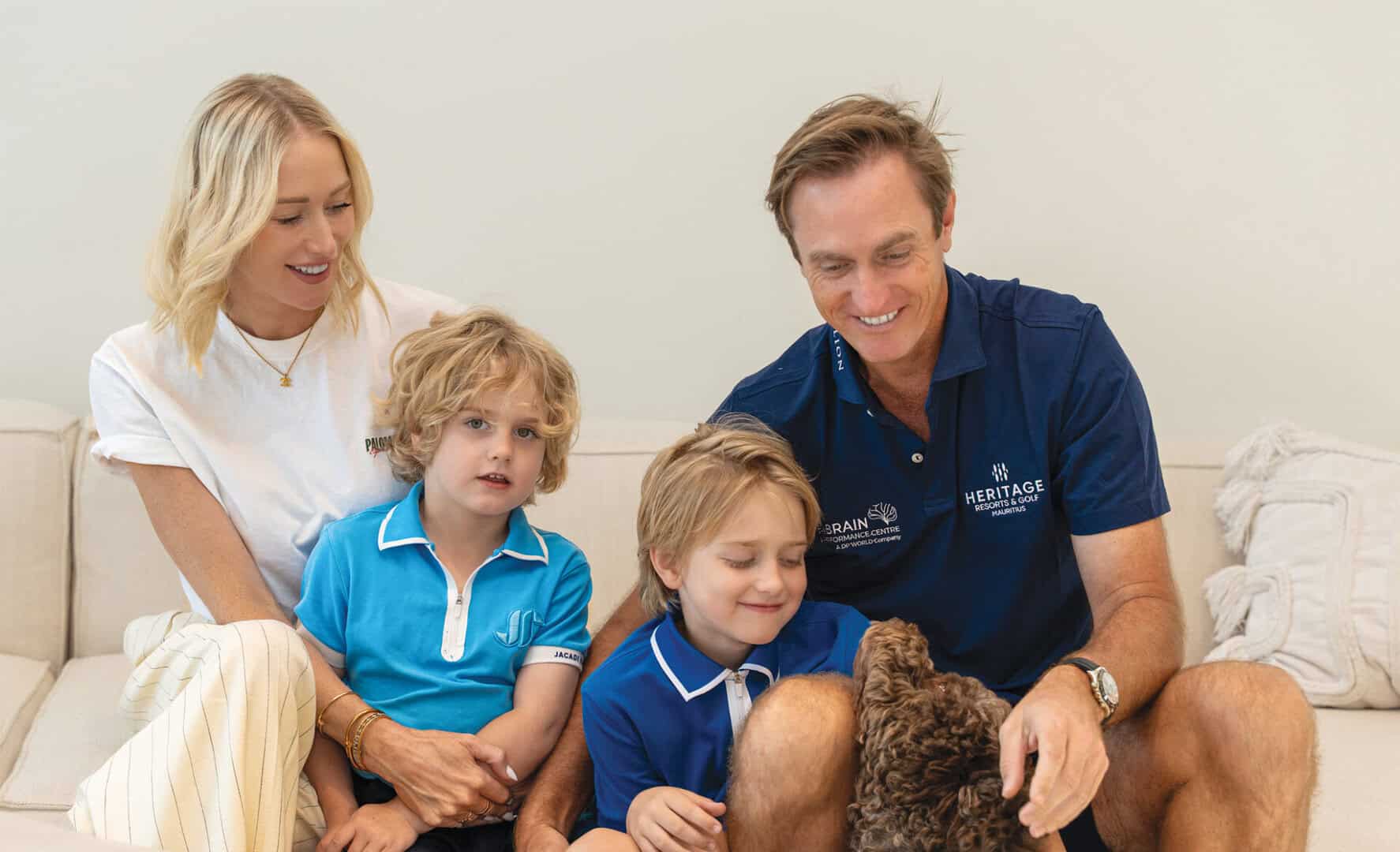
“Should I have had more lines on my CV? Yes, 100%. I had the talent; I just didn’t have the package and the drive to stay at that level for so long,” he says. “The thing that I’m most amazed at with the best players now is the frequency at which they play well… the capabilities of these guys of showing up week-in, week-out and delivering.”
Away from the course, Colsaerts has always had another big love – music. Long before he became a Ryder Cup cult hero, he was a crate-digging vinyl head, sneaking into Brussels clubs to study the DJs and absorb the music.
“My mother used to take me to the flea market in Brussels, in that street there’s probably the best techno club that was ever in operation in Belgium,” he recalls. “I remember seeing people coming out of that place, I was like, that looks cool! I bought my first electronic music album at HMV on Oxford Street when I was 12. There was this culture of massive clubs outside of town – lasers and smoke, trance music. I started going to clubs like that when I was 16 years old. I’m sad that my kids will never live in an era like that!”
So, what comes next?
“I’ve been contemplating a career in broadcasting and golf commentary for the last couple of years,” he says. “I’ve done The Ryder Cup, four Open Championships, all the events here in the Middle East. It’s going to be a very easy transition – I almost feel a certain level of duty to explain this sport and give golf aficionados a level of understanding at our level. I have a certain level of respect for the right information about the game that I’ve played for the last 35 years.”
We’re interrupted by Ollie, brandishing the commemorative gold disc inscribed, ‘The Dude: Congratulations for your 500th appearance on the DP World Tour.’ “This one’s special,” he proudly announces. The glint in Dad’s eye tells me that making his family proud probably sits higher in his internal leaderboard than any trophy he’s ever lifted.
As for legacy, Colsaerts isn’t the type for grandiose, self-congratulatory statements.
“I try to always be very honest; I try to always be very approachable,” he says. “If an eight-year-old watches you on the range for 15 minutes, he’s interested – be nice to him.”
In typical Colsaerts fashion, his closing thought is delivered with understated cool: “I was lucky enough to avoid the potholes, even though I tripped many times. But there’s no 25-year run in anything without struggling, so I’ve been lucky enough to be able to do it for quite a long time and probably longer than most.”
Take a bow, Nico. Take a bow.